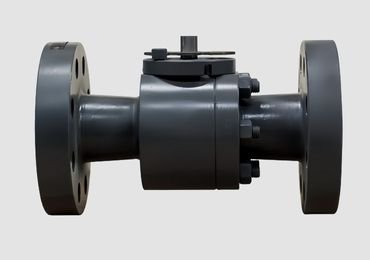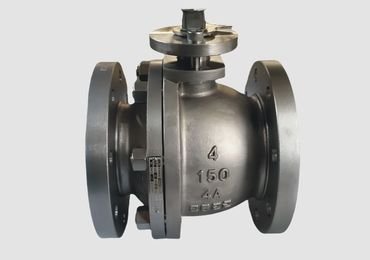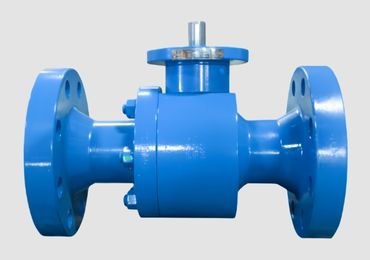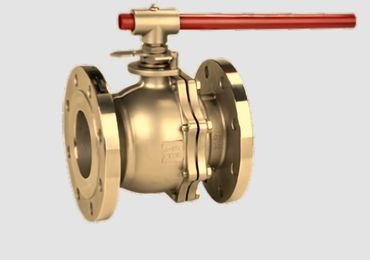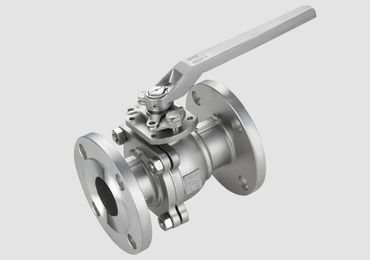Floating Ball Valve: The Perfect Balance Between Quality and Price
A floating ball valve is specifically type of valve wherein the balls which floats slightly in operations are used to control the flow of liquids or gasses. This movement ensures that the ball rests well against the valve seat there will be no leakage at all. They are extensively used in industries such as water tanks/buildings vessels, oil and gaseous industry and in industries of some production processing.
Construction of these float ball valves based on material type may be available in stainless steel material, forged steel, cast steel, or copper alloy depending on the need of the float ball valve in its operation.
These are widely employed because they are comparatively inexpensive, readily accessible with manufacturers, many of who are from China, who can place a large order for valves at one time.
Floating Ball Valve Specification
| Parameter | Specification |
|---|---|
| Valve Type | Floating Ball Valve |
| Size Range | 1/2″ to 12″ |
| Pressure Rating | 150# to 600# |
| Material | Stainless Steel, Carbon Steel, Alloy Steel |
| End Connection | Flanged, Threaded, Welded |
| Temperature Range | -50°C to 200°C |
| Seat Material | PTFE, RPTFE, PEEK |
| Operation | Manual, Pneumatic, Electric |
Different Types of Floating Ball Valve
RUFSUPPLY Floating Ball Valves: Built for Strength, Precision, and Dependable Flow Control.
Send your Inquiry on RUFSupply Floating Ball Valve Now
- Video
- Why Choose RUFSupply
- Technical Data
Custom Manufacturing
Tailored solutions to match your exact specifications, from materials to pressure ratings.
Rigorous Testing
Every valve is tested for performance, durability, and safety before shipping.
Expert Technical Support
Our team of engineers is available to help you select the right valve for your application.
Competitive Pricing
Direct manufacturing ensures no intermediaries, saving you costs.
Global Standards Compliance
Our valves meet API, ASME, DIN, JIS, and GOST standards, ensuring reliability worldwide.
Request a Quote Today!
Need a reliable trunnion ball valve for your critical operations? RUFSupply is your trusted partner for durable and high-performance solutions.
Technical Data
How Does a Floating Ball Valve Work?
The working mechanism of a floating ball valve is simple yet effective:
Open Position
Consequently, as the handle or actuator moves the ball, a specific aperture in the ball opens to match the direction of the flow of the fluid or the gas substance.
Closed Position
Their structural design turns further, and the ball stops the flow path to admit water at another angle. The pressure of the fluid flowing in the pipeline has an upwards force on the ball to make it close tight against the downstream seat.
Self-Sealing Design
The “floating” ball is supposed to react to pressure so seal can have the ability to seal efficiently as per requirement in most pressure systems that are not very consistent.
A design of a valve that allows it to float makes floating ball valves suitable for use in areas such as water tanks, where a rapid and efficient shutdown is required.
Note: They are particularly used in low pressure designs, and have proven to be reliable and efficient in providing on/off flow control.
Types of Floating Ball Valves
Floating ball valves come in several configurations to meet different application needs:
Two-Piece
It is inexpensive, compact and can be used in simple tasks.
Three-Piece (3PCS)
Used conveniently; for example, the application of the valve embodiment does not require removal of the pipeline so that is convenient for maintenance.
Top Entry
These types offer In-line maintenance and therefore can be used in systems that require them from the industries.
Side Entry
Should comprises some features such as Split-body where the whole body of the valve can be easily assembled and disassembled.
3-Way
Used in flow mixing, dividing or separating in elaborate pipeline connection systems.
Floating Ball Valve vs. Trunnion Ball Valve
Floating ball valves and trunnion ball valves serve similar functions but differ in design and applications:
| Feature | Floating Ball Valve | Trunnion Ball Valve |
|---|---|---|
| Ball Support | The ball “floats” and is supported by the valve seats. | The ball is anchored by a trunnion, reducing stress on the seats. |
| Applications | Low- to medium-pressure systems like water tanks and oil pipelines. | High-pressure and large-diameter systems. |
| Cost | More affordable and compact. | Higher cost due to additional components. |
| Maintenance | Simple and easy to maintain. | Requires specialized maintenance. |
Materials and Seat Designs
The performance of a floating ball valve depends on the materials used and seat design:
Materials
Stainless Steel: Corrosive resistant and has the ability to cope with harsh environmental conditions.
Forged Steel: Resistant and suitable for use in environments of high pressure.
Cast Steel: Economical for normal use and not suitable for professional use only.
Copper Alloys: Applied in certain application levels that demand a higher level of corrosion protection.
Seat Designs
Soft Seats: Acceptable sealing for most uses found.
Metal Seated Valves: For application in high temperatures or where tough materials are likely to be the mode of operation.
Why Choose RufSupply?
RufSupply supplies top-quality floating ball valves for domestic or international clients as a manufacturer. Here’s why customers prefer us:
Wide Range of Materials: Depending on the required usage, you can select stainless steel, forged or cast steel, or even copper.
Certified Quality: That is why our valves can be classified as API 6D compliant, which is important for implementing industrial and commercial projects.
Customizable Options: Depending on your pipeline, you can choose between two-piece, three-piece, three-directions, side, or top-access ball valves.
Competitive Pricing: We charge fair prices whether you want to order a single valve or use our services to buy valves in bulk.
Global Supply: We also supply our products globally, thus catering to customers in China and other countries.
Indeed, floating ball valves are ideal for use in natural gas applications where low to medium pressure is commonly used. Make sure the valve type is right for the gas stream to transport.
FLOATING BALL enables a limited amount of movement toward the closure as a result of pressure on the ball and valve seat to effectively seal any leakage.
A floating ball valve has the ball to regulate flow and it gives very fast shutoff while a gate valve has got sliding gate used for moderate flow regulation. Ball valves are again more compact and provide a better sealing feature.
Floating ball valves are not designed to prevent backflow. For backflow prevention, a check valve is recommended.
Floating ball valves are normally offered up to and including 12 inches in nominal size, though larger valves can be supplied on request.
Yes, but they should be metal seats that are resistant to wear and MUST be made from stainless steel or forged steel.
Yes, we have food-grade floating ball valves that are normally constructed from stainless steel that complies with the sanitary standards.
Yes, this is true because after some time of use, the seats may wear out for example in applications in which the seats come into contact with abrasives or high pressure fluids. This is true since the period in which the valves can be best replaced can be well determined and the valve can be replaced before its usage is completely done.
Standard floating ball valves have minimal leakage. However, leakage is caused by improper maintenance, worn out seats, or incorrect installation.
The deign of a floating ball valve incorporates a spherical ball to close or open the passage way while a plug valve employ the use of a cylindrical or conical plug. Ball valves in general provide better shut off and are easier to use.
Float ball valves are not effected for control purpose since when the valve is partially opened the seats tend to wear out. However they are more suitable for either ON/OFF control rather than for some measure accurately controlling the flow.
The torque requirement of the valve depends with the size and pressure of the valve in question. Larger valves or the ones operating at high pressure will likely need more torque for operation and for this an actuator could be needed.
Yes, floating ball valves are largely repairable since their seats or seals and the ball can be replaced when they are damaged. Three-piece designs are also relatively easy to maintain especially designs labeled 3PCS.
Floating ball valves are generally produced to Class 150, Class 300 or Class 600 with reference to pressure.
Yes, there are floater ball valves mainly intended for use where the temperature ranges below – 100°C and are usually made from stainless steel.
Consider factors like:
- Fluid type (corrosive, abrasive, gas, etc.).
- Operating pressure and temperature.
- Required certifications (e.g., API 6D).
- Size and connection type (flanged, threaded, etc.).
API 6D certification ensures the valve meets strict industry standards for safety, reliability, and performance in pipeline systems.
The anti-static floating ball valves are specially built to address this issue because frequently used fluids may not be conductive therefore generating static electric currents. They are used in areas such as explosion proof areas or other areas which are prone to fire outbreak.
They can, in fact, work under vacuum conditions if the necessary seals and materials corresponding to the vacuum level are installed on the floating ball valve.
Signs that a floating ball valve needs replacement include:
- Persistent leakage despite repairs.
- Cracks or corrosion on the body or ball.
- Difficulty in operation due to excessive wear or damage.

